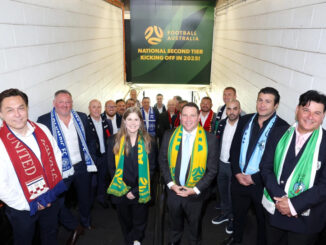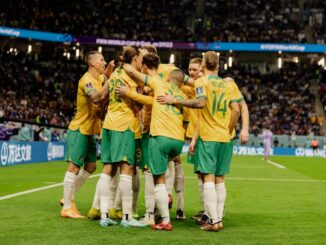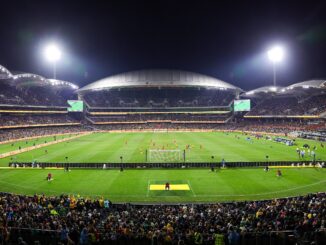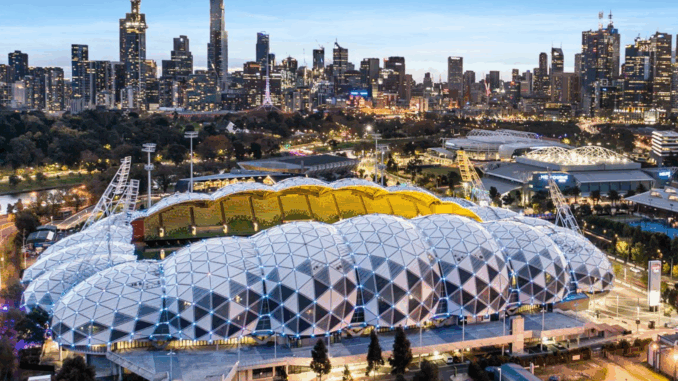
Cast your mind back to the last time Melbourne Victory played an A-League Grand Final at AAMI Park.
The season was 2014/15 and the game was between two of the league’s biggest rivals, Melbourne Victory and Sydney FC, just as it will be this Saturday night when the first ever Melbourne Derby Grand Final is contested in the A-League.
The A-League was flying high on the back of Alessandro del Piero’s stint with Sydney FC and the arrival of Western Sydney Wanderers into the league.
On a clear and crisp autumn evening, 29,843 crammed into AAMI Park to witness a Grand Final played in front of one of the most intense atmospheres the decider has seen across 20 years of the league.
Melbourne Victory were crowned champions that season for a third time, reinforcing their status as the league’s biggest club on the back of an average attendance of 27,260 (including finals).
Across town, Melbourne City averaged a respectable 10,374, which 12 months later rose to 11,062. But for the 2014/15 season a cumulative total of 571,011 attended games in Melbourne for a combined average of 19,690.
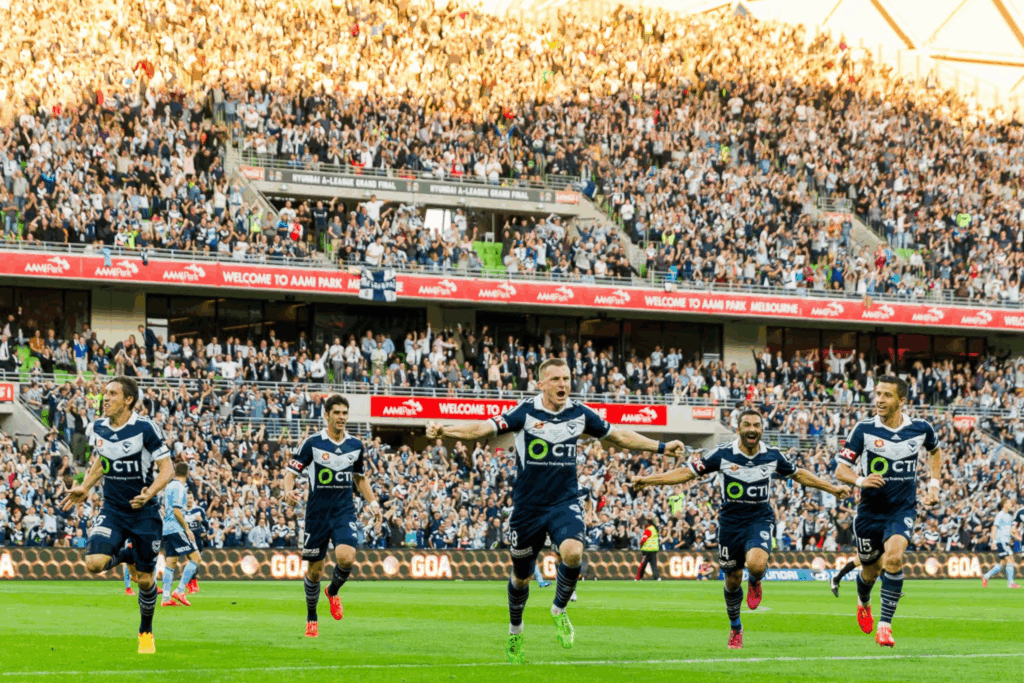
Fast forward a decade and the A-League is in a vastly different position, with crowds and interest down all across the league. There are myriad reasons as to why, but the one place where it has had the biggest impact is in Melbourne, with a staggering 51% drop in attendances this season compared to a decade prior.
Compare that with a smaller 17% drop in Sydney, and the question has to be asked – does the A-League have a ‘Melbourne Problem’?
How the mighty have fallen
There was a time when the A-League was effectively being propped up by the success of Melbourne Victory, which in the early years of the nascent league became an on and off-field juggernaut.
Two championships in the opening four seasons, sell-out crowds at the 55,000-capacity Docklands stadium and household stars in the form of Archie Thompson and Kevin Muscat; Victory managed to penetrate the sporting bubble in the AFL crazed city.
Backed by the power of the News Corp media empire, which at the time had the television rights through their Fox Sports pay-TV arm, it wasn’t ridiculous to claim that Victory were at times bigger than some of the Australian Rules clubs that dominate the city’s sporting landscape.
When the Victorian state government planned a new 20,000-capacity rectangular stadium to house the two Rugby codes and football, the success of Victory as a club saw capacity expanded to 30,000 such was the power of the fledgling club.
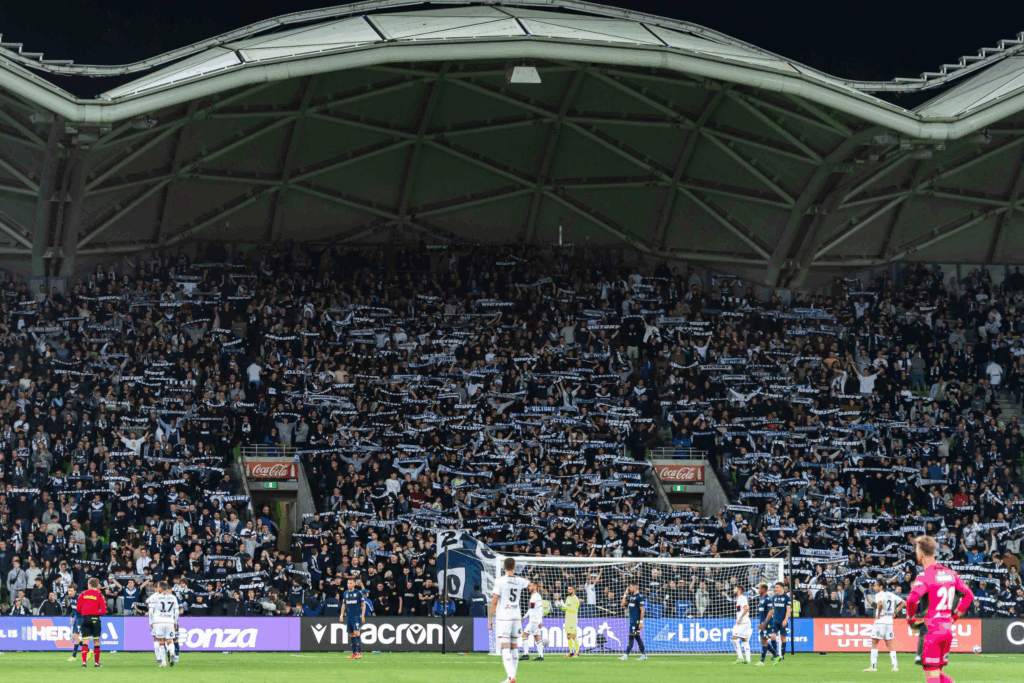
“The stadium this Saturday night was built off the sweat and the dedication of Melbourne Victory fans, anyone who knows their history knows this,” dedicated Victory member Dave Srhoj said on the For Vucks Sake fan podcast this week.
“The work that was done with Government to make this stadium what it is today was because of Melbourne Victory fans. And I want everyone to remember that, and understand that and know that because we share this f**king ground with (Melbourne City), but it’s not theirs, it’s f**king ours.”
Provocative as that may be, it is historically accurate. In fact, there were those that argued that the 30,000 capacity was still too small for the mega-club that Victory was projected to be.
That’s far from the case now, with Victory’s average crowd this season dropping to a paltry 12,778. How the mighty have fallen.
“There’s no question that people are enticed to new and shiny things – and Australian sport has had a glut of them in recent decades: think Big Bash, Super Rugby and A-League,” former leading journalist-turned football executive, Sebastian Hassett, explained to The Asian Game.
“They’ve lost some of their sheen over time, as always happens. What you’d hope is a core of regular supporters make it a habit to attend each week, because that’s what makes professional sport sustainable.
“Unfortunately, a myriad of proverbial ‘stones in the boat’ has really weighed down the popularity of the A-League. It’s not one singular issue, it’s a multitude, stacked on top of each other.
He continued: “The pandemic had a disproportionate effect on Melbourne, whilst the economic crunch has really sharpened discretionary spending in a very crowded market. If people are going to spend, they want something that’s a top-tier experience or deeply meaningful, ideally both.
“The erosion of trust from the (now-reversed) decision to move the grand final to Sydney is often cited as a breaking point among previously rusted-on supporters, while the subsequent fallout from the protest turned off plenty of potential fans – many of who were ready to embrace the sport after the Socceroos’ 2022 World Cup exploits.
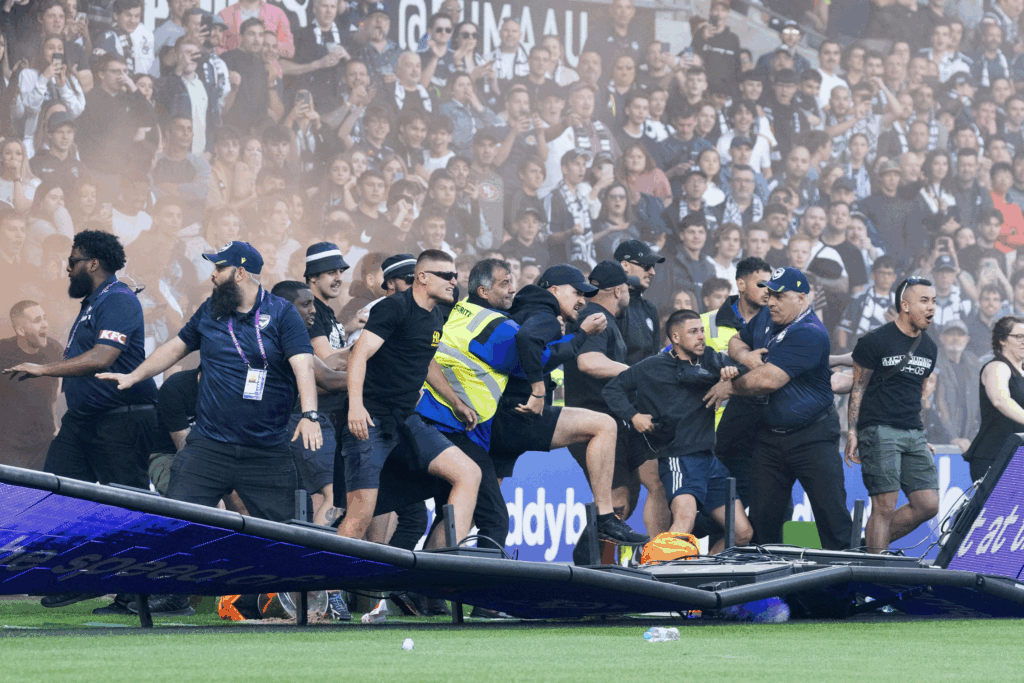
“That recriminations of that week, and the ongoing challenge about what is the ‘right’ level of active support, are still being felt today.”
It’s the events of that fateful day back in 2022 that have done untold damage, according to Tony Ising, one of the original founders of the club in the early 2000s.
“There are many incidents – but we all know that there is one in particular,” he told The Asian Game.
“The Christmas Derby pitch invasion is one of the most disgusting events in the history of Australian sport. I don’t think we can overstate the impact that had on rank and file fans.
“It’s a difficult position for the club, because we all want to retain the amazing atmosphere active support brings. But I don’t think the club has been tough enough to eliminate the cancerous elements from the terrace. Who defines the values and culture of the club? Unfortunately, the club has lost control of this.
“The way we’re perceived by members, fans and the broader community has been polluted by literal criminals in the stands. This devastating brand damage wouldn’t be tolerated in any other business. I can’t fathom why we allow it to stand here.”
It’s an issue Victory still grapples with today.
Only this season the club was embroiled in another controversy around its active support when a small number chose to boycott the club’s annual Pride Game, celebrating the LGBTIQ+ community, instead travelling to watch the club’s youth team play in the National Premier Leagues and shouting homophobic profanities throughout.
“During our NPL Round 8 fixture in Shepparton, extreme anti-social behaviour was displayed, including homophobic slurs, which are not reflective of our values, and is completely unacceptable,” Melbourne Victory managing director, Caroline Carnegie, said in a statement.
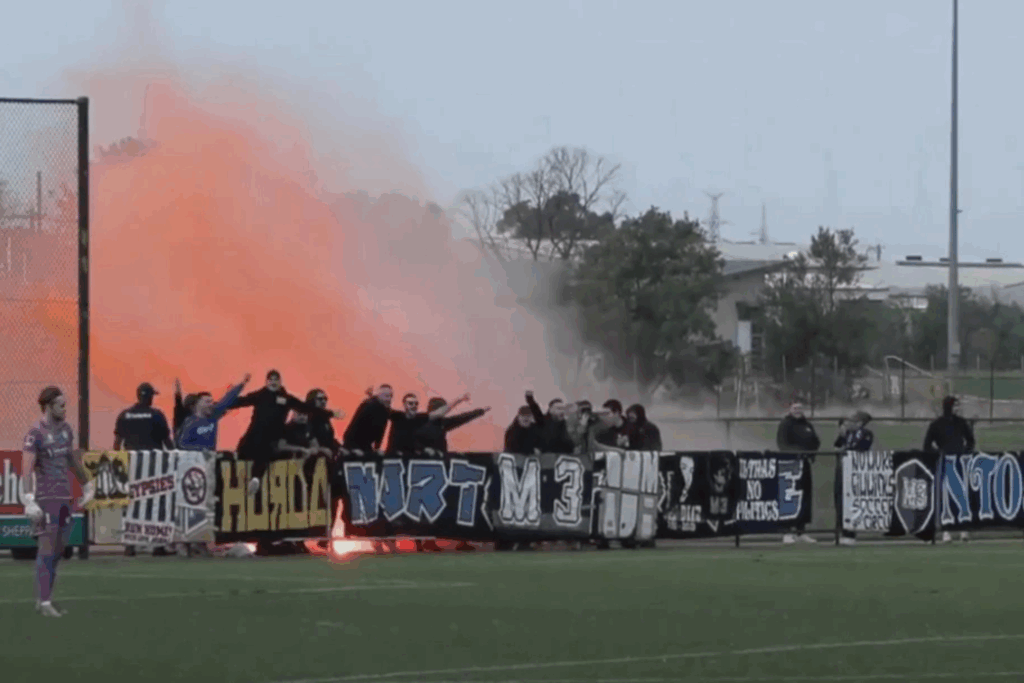
“This means, we are again in a position where a small group of people attending Melbourne Victory fixtures have engaged in conduct which does not truly reflect the Melbourne Victory supporter base, disrespects the culture, vision and values we have all worked hard to build, and actively damages the Club and its reputation.
“There is no place at Melbourne Victory for individuals who show a clear disregard for supporting our teams, the culture we have worked hard to build, or the inclusive environment we are committed to fostering.”
While it remains in Victory’s hands to dictate their own future in that regard, there are, according to Ising, some factors outside the club’s immediate control such as dysfunction within the league’s administration and a changing media landscape.
“The A-League doesn’t have a Melbourne problem as much as it has an A-League problem,” Ising said, “and much of that problem is self-inflicted.”
“The A-League clubs collectively need to shoulder much of the responsibility here. You can pinpoint the start of the decline back to 2018 when the clubs wrestled control of the league from the FFA. Not only did they run the game’s primary benefactor out of town, the APL has proven largely inept at managing the league.
“The scandalous waste of money on developing the KEEPUP digital platform really illustrated this, and then the harebrained decision to move the Grand Final to Sydney .
“This just goes to show how much we benefitted from a coordinated and united approach to grow the game back then.
“Another important issue is the global change in media consumption habits. The fragmentation of the digital media landscape is such a big factor. Back when we were establishing our identity we forged partnerships with major media outlets who were partners in growing the game. I don’t see relationships like those to the same extent these days.”
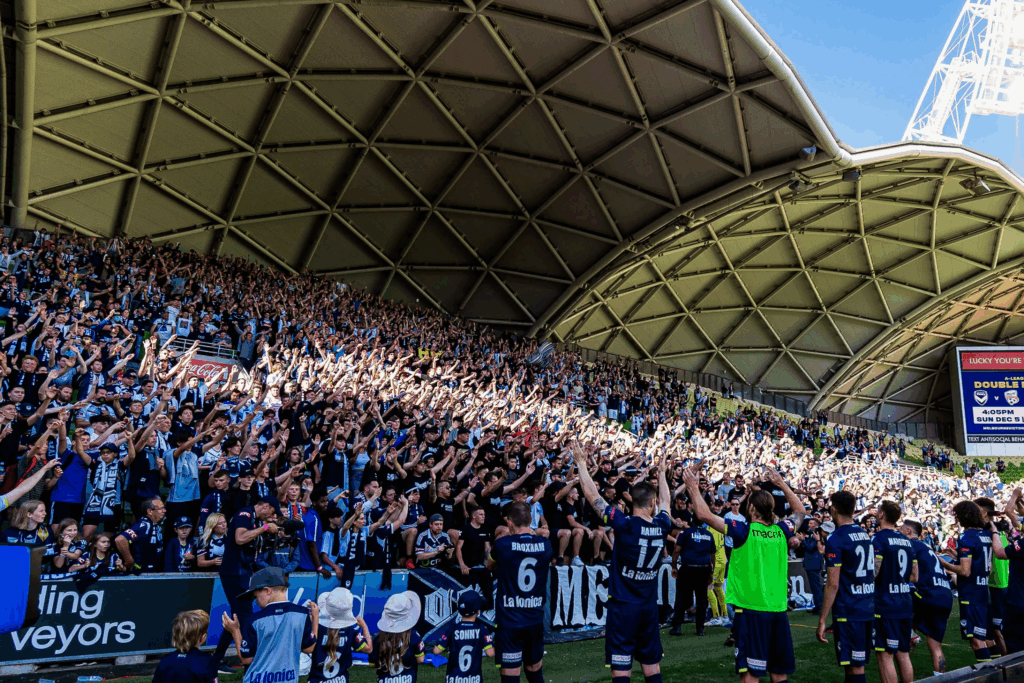
It’s a sentiment echoed by Hassett, a former journalist who understands the media landscape better than most.
“Coverage in the newspapers has shrunk dramatically, while free-to-air radio, television and digital coverage is scant,” he explained. “In a city that gorges on sport, and has predictable consumption routines, A-League content is notable for how difficult it is to find. By contrast, rival sports have created points of daily and weekly engagement on all platforms.
“Much of football’s coverage is back where it was 20 years ago – less focus on the play, more focus on the existential questions of governance and direction. As fascinating and important as that is, it doesn’t speak to the root cause of football’s appeal: the match itself and the rhythms of a season.”
Despite their alarming decline, they still remain the city’s foremost professional football club as both Melbourne City and Western United struggle even harder to attract a crowd. Diminished as it may be, the Melbourne Victory brand still has value in Melbourne, as evidenced by the grand final selling out in little more than 24 hours.
“Melbourne Victory means something in this league,” Shroj continued on the For Vucks Sake podcast.
“It is the emblem of professional football in this city. The adults in the room in the state of Victoria know this, they understand this. The kids out there know this, because they see the (Melbourne City) kits and just see the same as CFG in other parts of the world.
“This is why, despite some success that they’ve had, despite the biggest spend off the park they have, with their global reach, this is why they’ve not made an impact in this city. They’ve not grown, they’ve not added value. They mean nothing.
“We are Melbourne. We are this city. Full stop.”
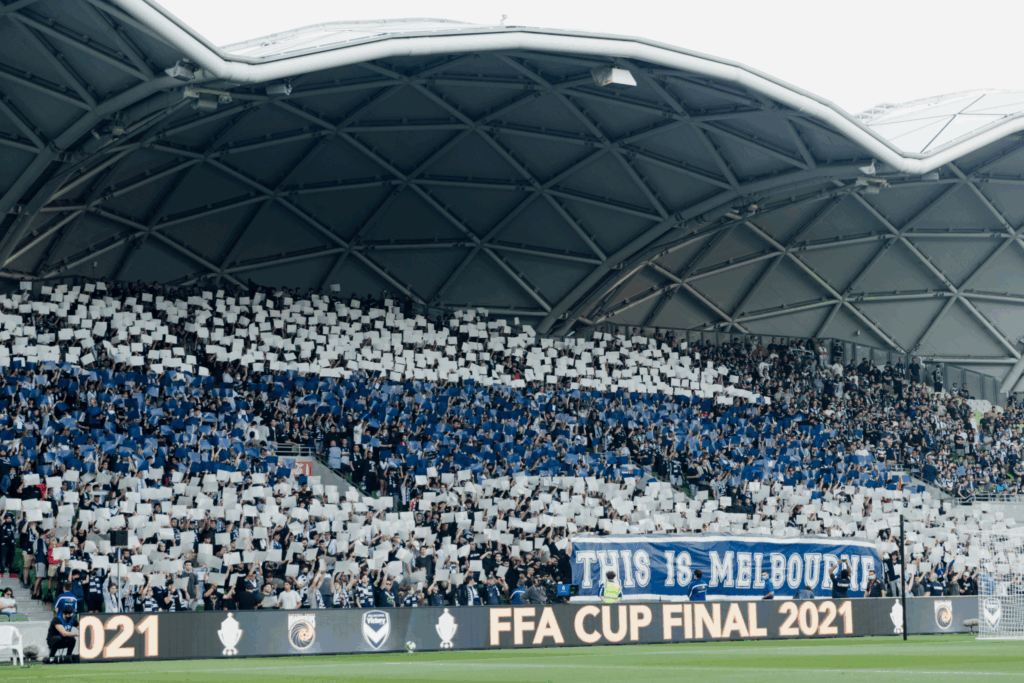
City without a home
There’s a general rule of thumb that the more successful a team is, the larger their crowds will grow. It’s the bandwagon effect.
Yet, the opposite is true for Melbourne City, who were formed as Melbourne Heart in 2009 and taken over by the City Football Group in 2014, changing their name and identity to match that of their parent club, Manchester City.
Their red and white colours became ‘City Blue’, while their badge was redesigned to mirror that of the mothership in Manchester.
While sustained success took time to develop, this weekend’s Grand Final will be their fifth in the past six seasons. They have become, on-field at least, an A-League powerhouse.
In the stands, however, it’s a different story. This season their average is just over 6000 – their worst ever, outside of the COVID impacted seasons.
Why, for a club that is so successful, have they failed to grow their fan base? According to longtime fan and foundation member, Aidan Watts-Fawkes, there is one underlying reason.
“The issue of low crowds and the club not gaining traction with fans isn’t because folks don’t grasp our identity, it’s because that identity doesn’t speak to them,” he told The Asian Game.
“I reckon this issue is two-fold. First, Manchester City as a club and brand doesn’t resonate in Australia as much as CFG HQ want to believe is the case.
“We’ve grown up on Liverpool, Manchester United, Arsenal. Arguably, Real Madrid and Barcelona ‘grab’ the football fan more than Manchester City. Why would a Liverpool fan looking for an A-League club to follow pick Melbourne City?
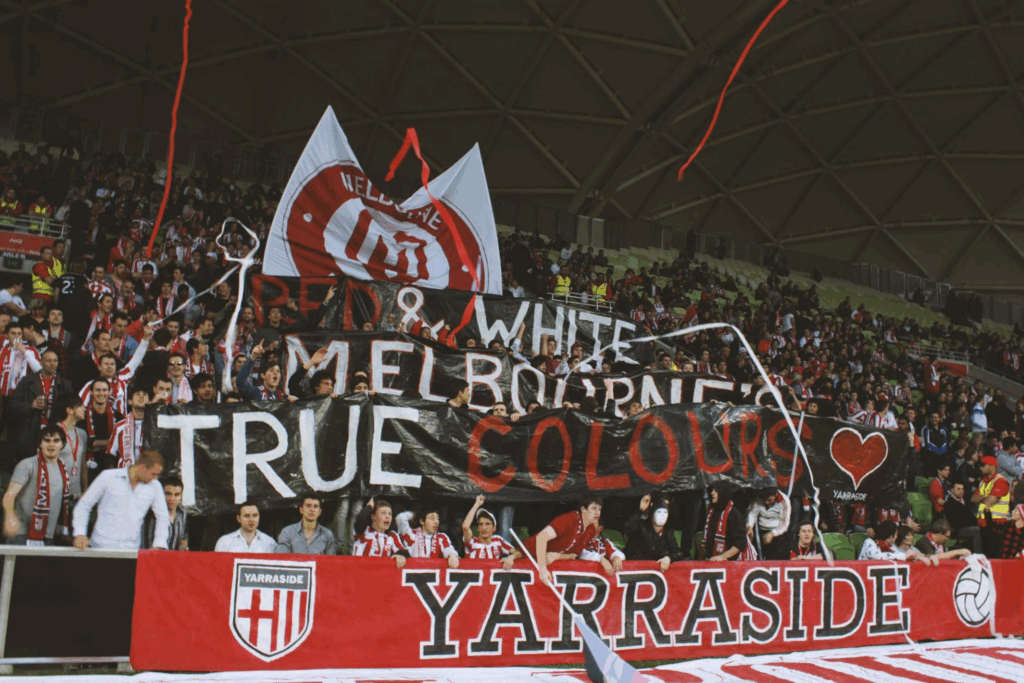
“The second reason, and I reckon this is far more pivotal, is that Melburnians want to feel that their club is for them, that it represents them. Melbourne is progressive, grassroots, rebellious, different, unique. I’d perhaps stop short of saying grungy and punk, but you can see what I’m getting at.
“The city thrives on not being like Sydney (or anywhere else). This can be seen through a social lens and a political lens, but also a sporting lens.
“Why would ‘Manchester City Lite FC’ resonate when football fans want something of their own? Hindsight is 20/20, but the major flaw in CFG’s thinking during the takeover was that we’d be captivated by being an arm of Manchester City. The opposite has proven true.
He continued: “Perhaps a story for another day, but I found that sense of being represented in Melbourne Heart. Certainly felt more ‘Melbourne’.
“The Heart-Victory divide felt stronger and more tribal. CFG should’ve harnessed that, kept us in red and white, built the identity around being ‘Melbourne’ (and not ‘Manchester Lite’). Not everyone agrees but I’d love us to wear the stripes again as the home kit.”
The new Melbourne City era started with so much promise back in 2014/15. David Villa was signed on a short guest stint, with rumours that Frank Lampard would also be on his way, although that never eventuated for a number of reasons. A new era of marquee signings looked to be on the horizon.
Close to 16,000 turned up for Villa’s first game, a 1-1 draw with Newcastle Jets in which he scored the equaliser, while 13,000 turned up two weeks later for what turned out to be his last game in Melbourne as his guest stint, which was meant to be ten games, was abruptly cut short.
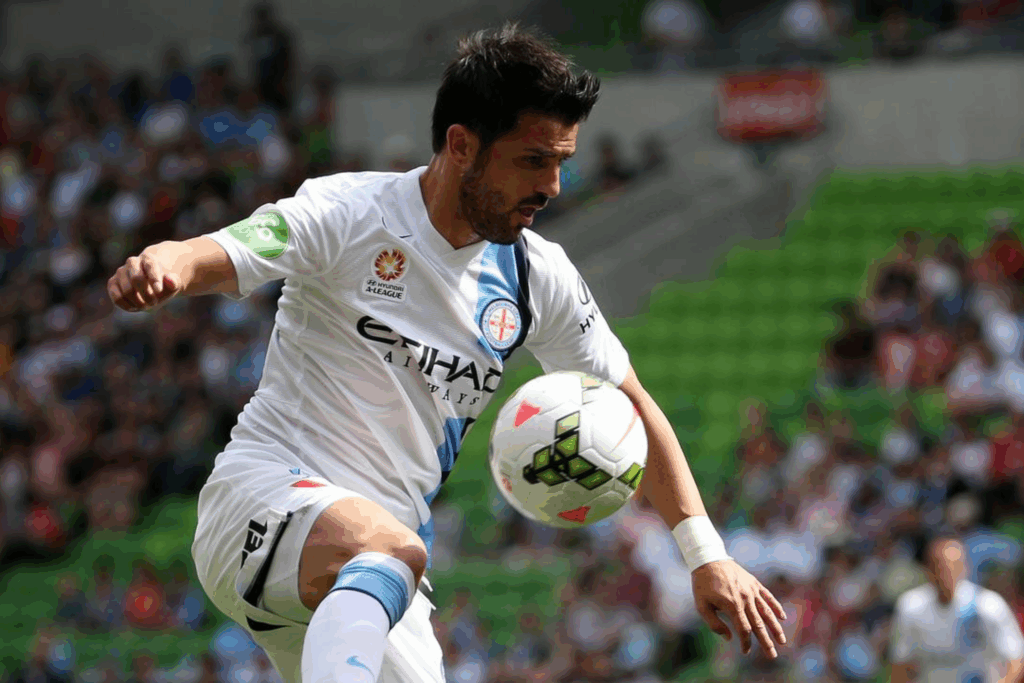
It is those early days of promise, Hassett says, that set expectations they have never been able to meet.
“In many ways, Melbourne City have been a hugely successful project,” Hassett, a former Football Victoria executive, explained. “They’ve won championships across both men and women, produced numerous Socceroos and have the state’s best junior setup.
“They’ve built an excellent training facility at Casey Fields, with a mini-stadium soon incoming. It’s an excellent production line and their development staff may not get the credit they deserve.
“I think the perception of them failing is because they were expected to be a mini-me of Manchester City, and the early arrivals of David Villa, Damian Duff, Tim Cahill and Bruno Fornaroli seemed to indicate they were going to be star-studded brand that played whirlwind football, just like their parent club.
“Unfortunately, the hopes of a ‘super club’ annually importing big stars and exciting managers never materialised – even their own supporters concede the club is yet to chisel out a solid identity.”
Watts-Fawkes, however, is unconvinced football fans in Melbourne would throw their support behind a ‘super club’ strategy without something more meaningful underpinning it.
“Marquee talent and Socceroos might get a few folks through the gates, but that’s not why you want them through the gate,” he said. “You want them there because they’ve bought into the club and its ethos, because they feel compelled to be pitchside.
“The club needs to build its core fan base, rather than relying on the next global star to add a few thousand to the crowd each week.
“And beyond that, I feel Melburnians would see through that. ‘Bling’ is a very Sydney trait, that’s not the Melbourne character at all, so becoming ‘Bling FC’ won’t solve our issues in the long term.”
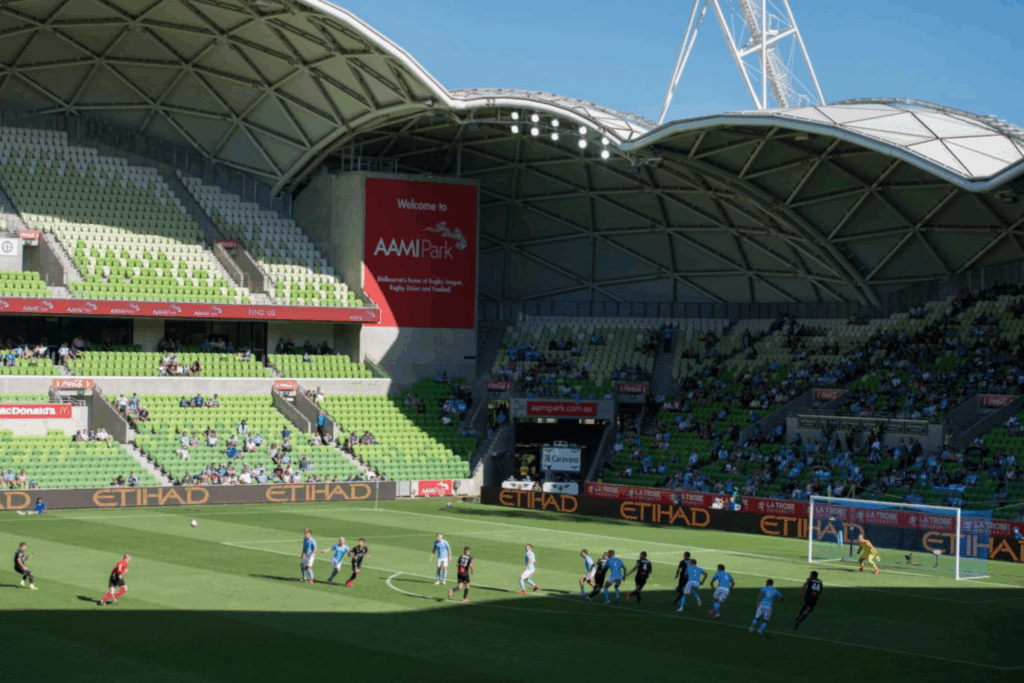
The debate in recent years has turned into one around location, with Melbourne City setting up their new training and administration in Melbourne’s south-east, with many calling for the club to make the move full-time, commit to building a new stadium in Dandenong and creating a geographical identity around one of the biggest multicultural areas in Melbourne.
“City has resisted calls to become the club of Melbourne’s south-east, saying they don’t want to abandon the original fan base, many of who live in the inner north and formed in the early days of Melbourne Heart,” Hassett said.
“In some ways, the administration probably hoped the club would organically find its place as a non-geographic, non-denomination club that would attract people with good football, as Victory once did. But one gets the feeling that no matter how many trophies City win, their popularity will remain capped until those trophies are won on behalf of a definitive region.”
On this, Watts-Fawkes agrees.
“We didn’t have enough of a point of difference to Victory to start with, and now being ‘Manchester City Lite’ is holding us back,” he said.
“We absolutely need to build an identity in a suburb (that’s easy to get to for people not in that suburb) and get out of AAMI Park. We need to start representing a community, rather than being ‘not Melbourne Victory’ or ‘Manchester City Lite’.
“We need to get to the point where people need a reason not to go, because they can’t fathom missing a Friday night under lights down the road from where they live.
“For me, this is one hundred percent Dandenong. Casey [where their training facility is based] is an outpost, (and) so far from anywhere. The housing density nearby is low, there’s barely any public transport, and it’d reinforce the notion that we’re irrelevant in the Melbourne sporting landscape.
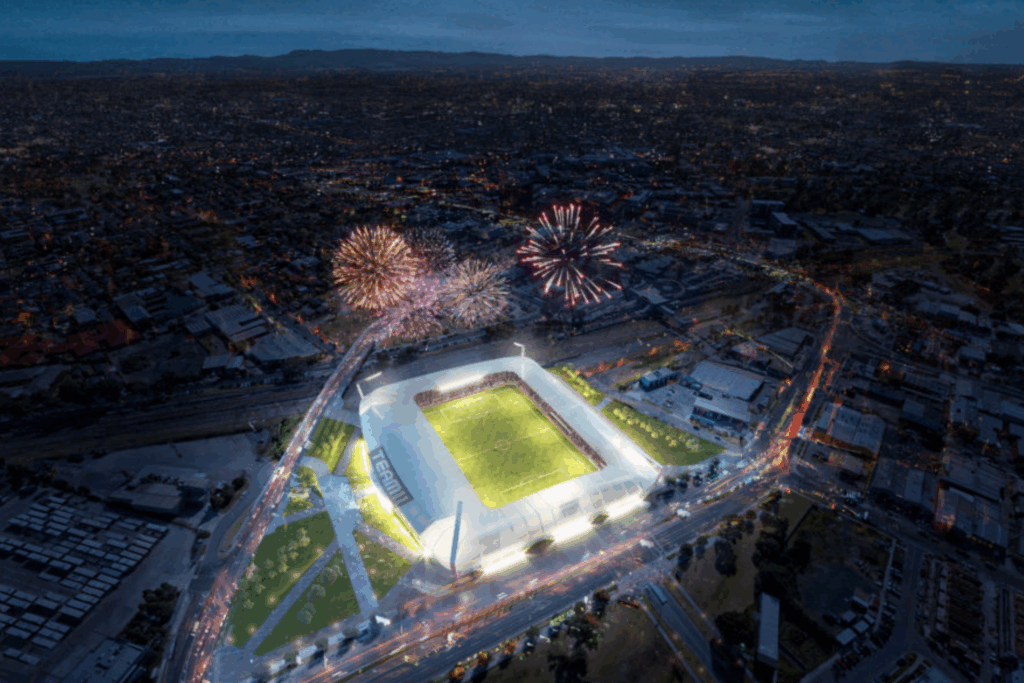
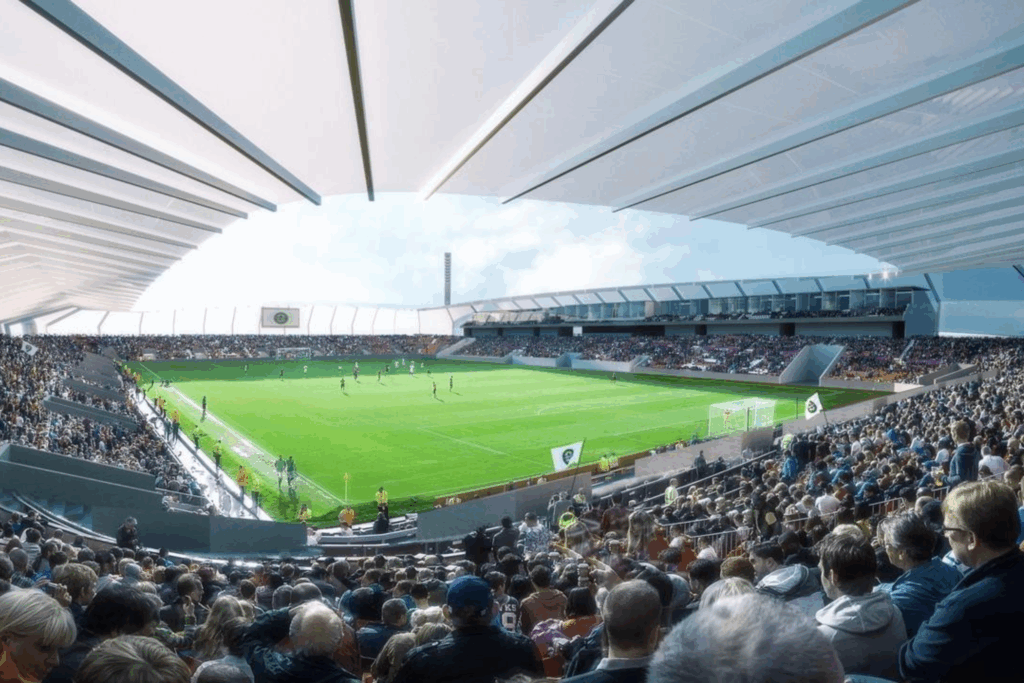
“A stadium nearby Dandenong station would become a drawcard for the whole south-east. The population is there, and it’s close enough to the city by train.
“There’s a compelling proposition for a Dandenong-based City that better embraces all the things that made people so invested in Heart and everything it stood for.”
The Future
Can the A-League every return to the halcyon days of a decade ago? Can Melbourne Victory return to the powerhouse it once was with average crowds of 25,000? Can Melbourne City carve out an identity that resonates with enough people to build their fan base?
These are the questions that the clubs and the league must grapple with.
The speed with which this weekend’s Grand Final sold out – in a little over 24 hours – shows that an appetite still exists in Melbourne. The battle is getting them to turn up week in, week out.
But, says Hassett, the Grand Final offers an opportunity to start that process of rehabilitation.
“You couldn’t ask for a better way to jump-start interest in the competition again,” he said.
“I’d have genuinely looked at taking the match to an even bigger venue, especially with no AFL games in Melbourne on Saturday and Sunday. This would have been an all-time record crowd.
“It has all the ingredients to be one of the great all-time Australian football matches, and with the amount of people who are asking me for tickets, I’d dare say the city’s interest is the highest it’s been for an A-League match in more than a decade.
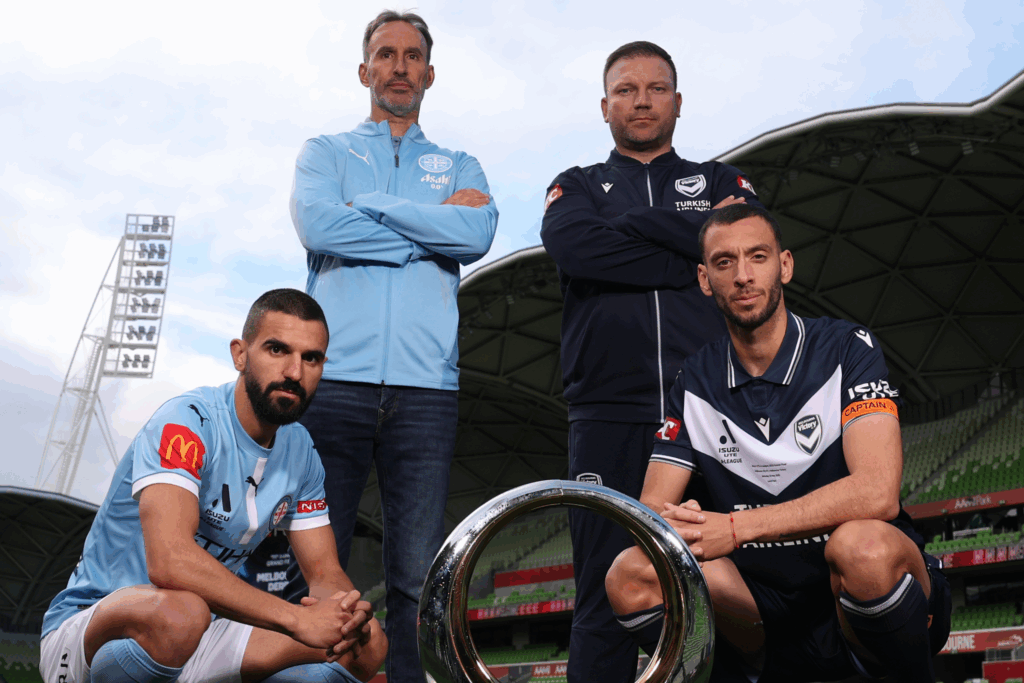
“It’ll be on the clubs themselves to seize the moment if they want the momentum to flow forward to next season and beyond. Both sides have lots of young talent, with some genuinely skilful stars who can dazzle on a weekly basis. If the match lives up the billing, it could well be the catalyst for the entire A-League to be revived – and not just in Melbourne.”
While Ising agrees the Melbourne Derby Grand Final offers an opportunity, in order to grasp it, he says, there needs to be a mindset shift to go with it.
“I think the club, like the league as a whole, is fixated on retention rather than growth,” he said. “And that’s entirely understandable as we struggle post-COVID.
“But I’d encourage the club and the league to keep looking forward and re-embrace a start-up mentality. I feel we lost a lot of momentum back in 2011 when FFA adopted a rear-view mirror attitude and seemed more intent on appeasing historical factions within the game.
“The focus was on the Australia Cup and proposals for promotion and relegation. I think they took their collective eyes off the ball, leaving the A-League to stagnate.
“I do think that the recent announcement of Tony Bloom taking a share in (Melbourne Victory) is a massive opportunity. I think we can re-examine our identity, our values and ensure the club resets as we approach the next 20 years.”


